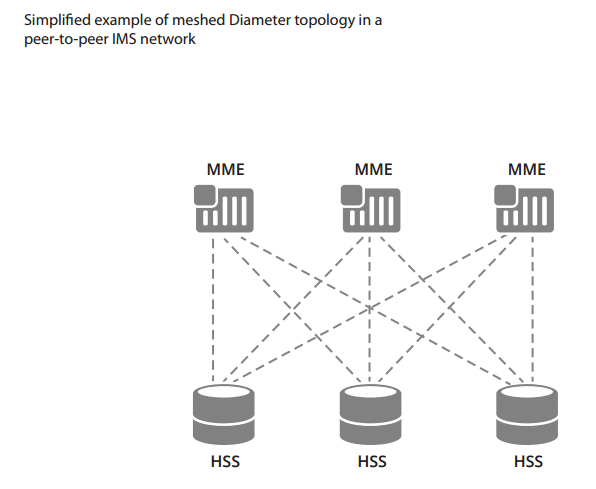A Diameter Signaling Controller (DSC) helps communications service providers overcome Diameter signaling performance, scalability and interoperability challenges in Long-Term Evolution (LTE) and IP Multimedia Systems (IMS) networks. Diameter is a next-generation industry-standard protocol used to exchange authentication, authorization and accounting (AAA) information in LTE and IMS networks. It was derived from and improves upon the widely deployed RADIUS (Remote Authentication Dial-In User Service) and LDAP (Lightweight Directory Access Protocol) AAA protocols, providing more reliable, secure and flexible transport mechanisms for mobile data networks. A variety of LTE and IMS network functions make use of Diameter, including the Policy and Charging Rules Function (PCRF), Home Subscriber Server (HSS) and Online Charging System (OCS) elements. The protocol provides a general framework for exchanging AAA messages, and specifies a standard set of AAA request and response commands and attributes.
What is Diameter Signaling
Diameter is based on a peer-to-peer architecture, where any Diameter node can exchange information with any other Diameter node (either directly or through intermediary nodes known as agents). These peer-to-peer communications flows result in a mesh topology (often referred to as an “N-squared” connected mesh) which is inherently difficult to scale and manage. (See figure below.)
Diameter signaling is used by a wide range of network elements to exchange information related to device tracking, session tracking, session management, data usage, and other information. Multiple Diameter messages are exchanged every time a user turns on a smartphone or launches a mobile app. As smartphones proliferate and mobile traffic continues to increase, so does the volume of Diameter signaling traffic in the network. In recent years a number of prominent wireless carriers have suffered outages caused by Diameter signaling storms. Diameter Signaling Controllers help communications service providers overcome the inherent scalability and performance constraints of the Diameter protocol.
A Diameter Signaling Controller serves as a Diameter Interworking Function (IWF) gateway, providing routing and protocol mediation functions for Diameter signaling. The DSC allows mobile operators to collapse complex Diameter mesh topologies into simpler, hierarchical hub-and-spoke topologies that are more scalable and more easily managed. (See figure below).
.jpg)
DSC Features and Capabilities
A Diameter Session Controller provides critical Diameter protocol routing, mediation and interworking functions within and across IMS and LTE networks. DSCs help mobile operators improve Diameter scalability and manageability by centralizing Diameter signaling, routing and traffic management functions.
Typical DSC features include:
- Dynamic routing – eliminate connected mesh topologies by providing an intermediary agent that dynamically and statefully routes Diameter messages based on administratively defined policies
- Load balancing – distribute Diameter messages across network elements to optimize performance and ensure high availability
- Interworking – provide protocol translation capabilities to enable interworking with legacy AAA protocols such as RADIUS and LDAP
- Interoperability – normalize and mediate Diameter messages to enable interoperability between dissimilar Diameter implementations from different vendors
- Centralized management – centralized Diameter configuration, monitoring, reporting and troubleshooting tools to simplify network administration and operations


